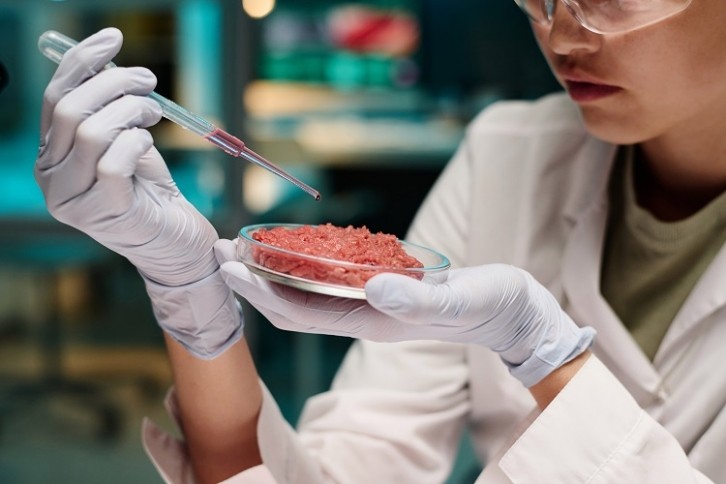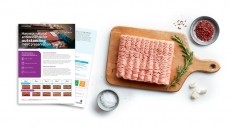Filtration technique could slash the cost of cultivated meat

Cultivated meat is one of the key alternatives proposed to the rapidly expanding demand for animal protein. With lower land and water use involved, and far less livestock, it offers what many consider a more sustainable alternative.
However, one of the key barriers to commercialising cultivated meat is cost, especially when it comes to cell culture media.
A new study in the journal Nature Food proposes an answer to this problem, reducing the cost significantly by increasing efficiency and cutting out expensive ingredients.
How has the cost of cultivated meat production been reduced?
The cell density of cultivated meat has already been significantly reduced since Mark Post’s first cultivated burger in 2013. Single cell suspension, which disperses cells in a liquid medium, allowed for far greater density of cells than initial techniques which were limited to the surface area of bioreactors.
The researchers then took this a step further, using a technique called tangential flow filtration (TFF), which, the study suggests, allows for far greater cell density than alternating tangential flow (ATF), another culturing technique. Pressure considerations limited the volumes that could be produced using ATF; not so with TFF.
The technique, which the researchers carried out continuously over a period of 20 days, was able to create 130bn cells per litre, and achieved yields of 43% weight per volume.
Cell culture media is another significant problem of cost, often taking up around 40–60% of the total costs involved.
To solve the cost problem of cell culture media, the researchers used serum-free media. They showed that albumin, a costly protein which is useful for cell growth but contributes to a significant chunk of the total costs of cultivated meat production, could be replaced by non-animal ingredients such as hydroxypropyl β-cyclodextrin and methylcellulose. The removal of albumin was the single largest part of cost reduction.
Bovine cells produce their own growth factors
In January this year, a study in the journal Cell Reports Sustainability found that bovine cells could be engineered to create their own growth factors, which can also significantly reduce the costs of the process of producing cultivated meat.
Finally, the continuous production method they used saved significant costs due to saving time. It used perfusion bioreactors, which unlike fed-batch stirred bioreactors, which have to be cleaned every few days because of a build-up of soluble waste such as ammonia and lactate, wash out the waste with fresh media.
Without time spent on sterilisation, the production process could take place continuously. The size of the vessels used was also smaller, meaning that these cost less. Over the 20 days of production, the process remained stable, suggesting it’s a viable production method. It also provides an advantage in the event of contamination, as the cleaning required would be done by ongoing processes, thus reducing downtime.
Plant-based meat: The costs
It’s not just cultivated meat that faces barriers to commercialisation from cost. Plant-based meat has similar issues. Their high cost would be an issue at the best of times, but during a cost-of-living crisis, cost can be a make-or-break for consumers. The reasons for plant-based’s high price compared to traditional meat include low economies-of-scale and subsidies for the meat industry, some have suggested.
How cheap can cultivated meat really be?
The researchers conducted a techno-economic analysis for a theoretical production facility with a capacity of 50,000 litres.
What they found was that, by using TFF, a continuous process and an animal-free serum, cultivated chicken can be produced for $6.20 (€5.60) per pound (0.45kg).
This would mean that, at scale, the price of cultivated chicken can match the price of organic chicken.
The study was in part funded by the company Believer Meats.
Sourced From: Nature Food
'Empirical economic analysis shows cost-effective continuous manufacturing of cultivated chicken using animal-free medium'
Published on: 29 August 2024
Doi: https://doi.org/10.1038/s43016-024-01022-w
Authors: L. Pasitka, G. Wissotsky, M. Ayyash, N. Yarza, G. Rosoff, R. Kaminker & Y. Nahmias






















